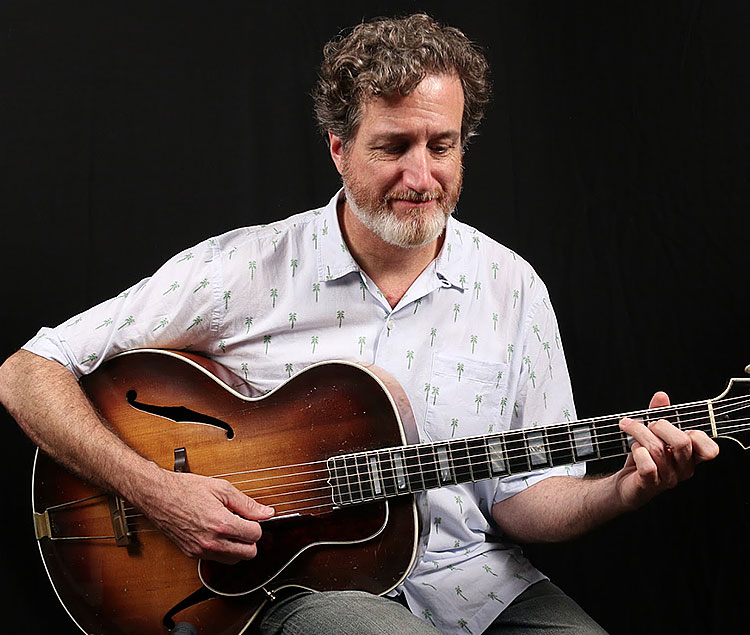In Part 2, Matt uses the three- and four-note arpeggios he’s given you in previous weeks to explore the mysteries of the ii–V progression and construct licks that are built to provide resolution.

If you’ve felt that the logic of “jazz lines” eludes you; if you’ve noticed that the phrasing of your own solos doesn’t sit right in a swing context; if you’ve started to hear that the lines played by your favorite jazz players aren’t just exercises running up and down a scale, but you don’t yet grasp the source of their “whirling circles”; or, if you’re someone who already understands some jazz theory, but still feels that your solos need more direction and “pocket,” this class will help you get “unstuck.
Matt examines Louis Armstrong’s 1937 solo on “Sunny Side of the Street,” and talks about playing above the changes. He also gives you some stand-alone licks that he has pulled out of the solo, which you can use in your own playing.
Matt shows you Lester Young’s legendary 1936 solo on “Lady Be Good” and gives you ideas on translating Lester’s saxophone phrasing to the guitar. He also gives you some “Lester Licks” from his 1939 “Lester Leaps In” solo, and talks about how Lester uses the major and minor pentatonic solos in his playing.
In this session, Matt shows you Charlie Christian’s solo on “Honeysuckle Rose,” recorded with the Benny Goodman Orchestra in 1939. As he walks you through the solo he gives you alternate fingerings and shows you how to practice the solo by dividing the solo into one-, two-, and four-measure sections.
Session Four is all about the blues, specifically Lester Young’s and Charlie Christian’s performance of“Paging the Devil” with the Kansas City Six, recorded live at Carnegie Hall on December 24, 1939. Matt walks you through Charlie’s and Lester’s solos and, among other things, talks about how Charlie and Lester used diminished and augmented chord tones. He also gives you some diatonic arpeggio exercises to work on.
In Session 5, Matt teaches a tune in a minor key, “I’ve Found A New Baby,” and uses it to show you how to “harvest licks” in the style of Bud Freeman and Charlie Christian, with echoes of George Barnes.
In Session 6, Matt looks at ways that a soloist can embellish a song’s melody, as he deconstructs George Barnes’s masterful version of “I Can’t Give You Anything But Love” from the late 1940s, a particularly incendiary example of the art. Matt also uses the three- and four-note arpeggios he’s given you in previous weeks to explore the mysteries of the ii–V progression and construct licks that are built to provide resolution.
In Session 7, Matt looks at the two primary ways of playing over rhythm changes. This means taking that exhilarating first dive into “the other way” of playing them – an approach which became dominant by the mid-’40s and has remained so. Matt also unravels some of the mysteries around the endless unspooling of “ii-V” progressions in swing solos, and learning ii-V licks and, most importantly, where and how to use them.
For our final class, we’re throwing a party! We’re taking a refreshing plunge into a cult classic, “Big Boy”, recorded by guitarist Bill Jennings. Though not a “swing tune” per se, it is nonetheless a perfect demonstration of a musician applying all the essential ingredients of a perfect swing solo—great catchy phrases, blues, harmonic adventuresomeness, and a super swinging feel—while also capturing all the wild textures and emotion of a horn, on the guitar. This memorable solo contains an almost through-composed logic and grace, and with its melding of great guitar licks with bebop and blues lines it truly has something for every type of player, of every level.